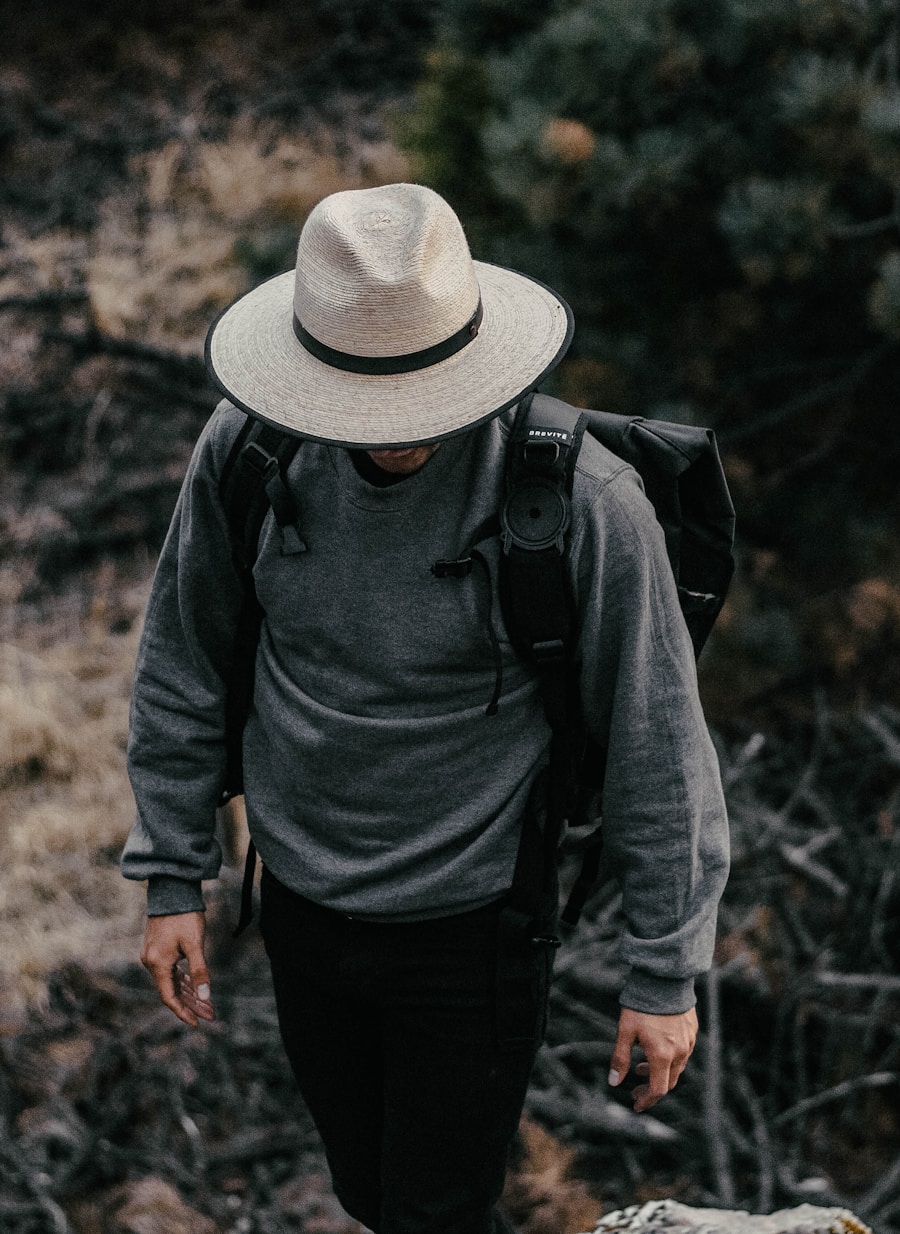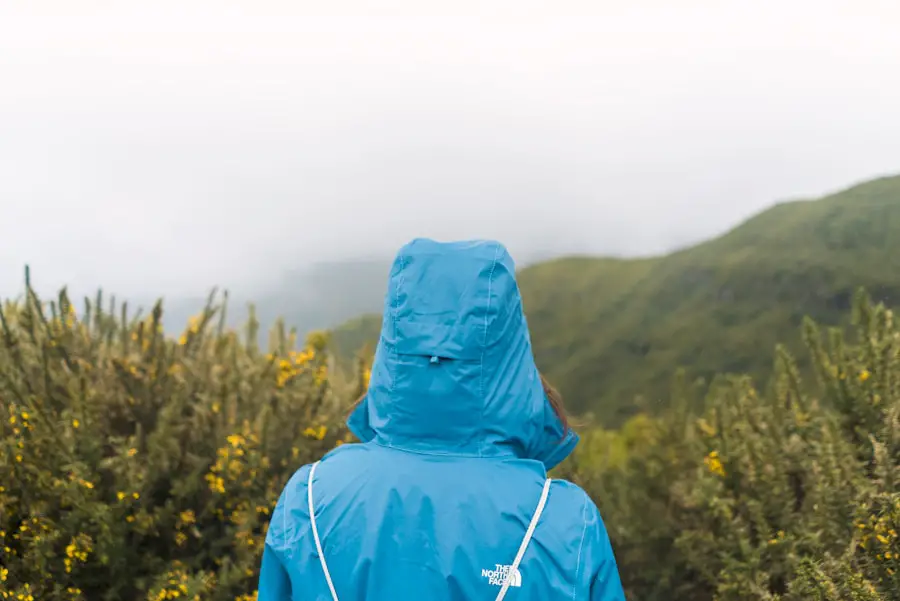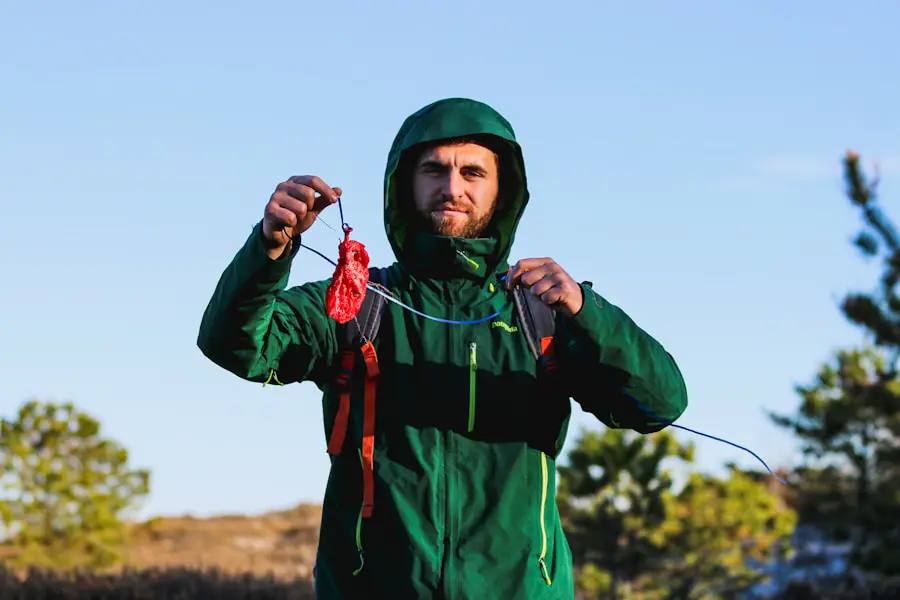When embarking on a hiking adventure, the significance of appropriate attire cannot be overstated. Proper hiking clothing serves as a protective barrier against the elements, ensuring that hikers remain comfortable and safe throughout their journey. The right attire can help regulate body temperature, wick away moisture, and provide protection from abrasions and insect bites.
In essence, the clothing you choose can make the difference between an enjoyable trek and a miserable experience. Moreover, hiking attire is not merely about comfort; it also plays a crucial role in enhancing performance. For instance, lightweight and breathable fabrics allow for greater mobility and reduce fatigue, enabling hikers to cover more ground with less effort.
Additionally, the right clothing can help prevent injuries by providing support and protection to vulnerable areas of the body. Therefore, understanding the importance of proper hiking attire is essential for anyone looking to explore the great outdoors effectively and safely.
Key Takeaways
- Proper hiking attire is important for comfort, protection, and safety on the trails.
- Choosing the right footwear is crucial for preventing blisters, ankle injuries, and providing support on different terrains.
- Layering clothing for hiking provides flexibility and protection against changing weather conditions.
- Fabrics like merino wool, synthetic blends, and moisture-wicking materials are best for hiking clothing.
- Essential accessories like hats, sunglasses, and sunscreen are important for sun protection and overall comfort on the trails.
Choosing the Right Footwear for Hiking
Footwear is arguably one of the most critical components of hiking attire. The right pair of hiking boots or shoes can significantly impact a hiker’s experience on the trail. When selecting footwear, it is essential to consider factors such as terrain, distance, and personal comfort.
For instance, rugged terrain may require boots with excellent ankle support and a sturdy sole to navigate rocky paths, while lighter trails might be more suited to trail runners or low-cut shoes that offer breathability and flexibility. Fit is another crucial aspect when choosing hiking footwear. Ill-fitting shoes can lead to blisters, calluses, and other foot ailments that can quickly derail a hiking trip.
It is advisable to try on hiking shoes with the socks you plan to wear on the trail and to walk around in them to ensure they provide adequate support without being too tight or too loose.
Additionally, considering the type of socks worn can enhance comfort; moisture-wicking materials can help keep feet dry and reduce friction.Layering for Comfort and Protection

Layering is a fundamental principle in outdoor clothing that allows hikers to adapt to changing weather conditions while maintaining comfort. The layering system typically consists of three main layers: a base layer, an insulating layer, and an outer shell. The base layer is designed to wick moisture away from the skin, keeping the hiker dry and comfortable.
Fabrics such as merino wool or synthetic materials are popular choices for this layer due to their moisture-wicking properties. The insulating layer serves to retain body heat, which is particularly important in cooler temperatures. Fleece jackets or down vests are common options that provide warmth without adding excessive bulk.
Finally, the outer shell protects against wind, rain, and other environmental factors. Waterproof and breathable jackets are ideal for this layer, as they allow moisture from sweat to escape while keeping external elements at bay. By mastering the art of layering, hikers can ensure they remain comfortable regardless of the conditions they encounter on the trail.
The Best Fabrics for Hiking Clothing
| Fabric Type | Features | Advantages |
|---|---|---|
| Merino Wool | Natural, moisture-wicking, odor-resistant | Regulates body temperature, dries quickly, minimizes odor |
| Polyester | Quick-drying, lightweight, durable | Resists wrinkles, retains shape, easy to care for |
| Nylon | Strong, abrasion-resistant, water-repellent | Dries quickly, resists mildew, retains color well |
| Spandex | Elastic, stretchy, form-fitting | Enhances mobility, provides comfort, retains shape |
The choice of fabric is paramount when it comes to hiking clothing, as different materials offer varying benefits in terms of performance and comfort. Synthetic fabrics such as polyester and nylon are popular choices due to their durability, lightweight nature, and moisture-wicking capabilities. These materials dry quickly, making them ideal for strenuous hikes where sweat accumulation is inevitable.
Additionally, synthetic fabrics often have built-in UV protection, which is beneficial for long days spent under the sun. Natural fibers like merino wool also have their place in hiking attire. Merino wool is renowned for its ability to regulate temperature; it keeps hikers warm in cold conditions while remaining breathable in warmer weather.
Furthermore, it has natural odor-resistant properties, allowing hikers to stay fresh even after multiple days on the trail without washing their clothes. Cotton, while comfortable in casual settings, should generally be avoided for hiking due to its tendency to retain moisture and dry slowly, which can lead to discomfort and chills in cooler conditions.
Essential Accessories for Hiking
In addition to clothing and footwear, various accessories can enhance a hiker’s experience on the trail. A good-quality hat is essential for sun protection; wide-brimmed hats provide shade for the face and neck while helping to keep the head cool. Additionally, sunglasses with UV protection are crucial for safeguarding the eyes from harmful rays, especially at higher altitudes where UV exposure increases.
Another important accessory is a reliable backpack that fits comfortably and distributes weight evenly across the body. A well-designed backpack should have adjustable straps, multiple compartments for organization, and features such as hydration reservoirs or pockets for easy access to water bottles. Trekking poles are also valuable tools that can help reduce strain on joints during steep ascents or descents while providing stability on uneven terrain.
These accessories not only enhance comfort but also contribute significantly to safety on the trails.
Considerations for Different Types of Weather

Protecting Against the Sun
In hot weather, lightweight and breathable fabrics are crucial for preventing overheating. Light-colored clothing can also help reflect sunlight rather than absorb it, keeping hikers cooler during their treks. Additionally, wearing a hat and applying sunscreen can protect against sunburn.
Dressing for Cold Weather
Conversely, cold weather requires a different approach to dressing for success on the trail. Insulating layers become vital in maintaining body heat, while waterproof outer layers protect against snow or rain.
Preparing for the Unexpected
It’s also important to consider wind chill factors; even a mild temperature can feel frigid when combined with strong winds.
Hikers should be prepared for sudden weather changes by carrying extra layers or emergency gear such as thermal blankets or hand warmers.Tips for Dressing for Safety on the Trails
Safety should always be a top priority when dressing for a hike. One of the most effective ways to enhance visibility on the trails is by wearing bright colors or reflective materials. This is particularly important in areas where trails may intersect with roads or where visibility could be compromised by dense foliage or low light conditions.
Bright colors not only make hikers more visible to others but also help them stand out against natural backgrounds. In addition to visibility, hikers should consider protective clothing that minimizes exposure to potential hazards such as thorny plants or insect bites. Long sleeves and pants made from durable fabrics can provide an extra layer of defense against scrapes and bites from insects like ticks or mosquitoes.
Wearing gaiters can also protect lower legs from debris or water while traversing muddy or overgrown trails. By prioritizing safety in their clothing choices, hikers can enjoy their adventures with greater peace of mind.
Sustainable and Eco-Friendly Hiking Attire Options
As awareness of environmental issues grows, many outdoor enthusiasts are seeking sustainable and eco-friendly options for their hiking attire. Brands are increasingly focusing on using recycled materials in their products; for example, some companies produce jackets made from recycled plastic bottles or other post-consumer waste. This not only reduces landfill waste but also conserves resources by minimizing the need for virgin materials.
Additionally, many sustainable brands prioritize ethical manufacturing practices by ensuring fair labor conditions and environmentally friendly production processes. Hikers can also consider purchasing second-hand gear or clothing from thrift stores or online marketplaces as a way to reduce their environmental footprint while still acquiring quality hiking attire. By choosing sustainable options, hikers contribute positively to environmental conservation efforts while enjoying their time in nature.
When planning what to wear while hiking, it’s important to consider all aspects of your outdoor adventure.
In addition to proper clothing and footwear, it’s also essential to pack the right gear for your trip. One item that can come in handy during your hike is a solar-powered camping lantern. This article from TakeTravelInfo provides valuable information on the benefits of using a solar-powered lantern while camping or hiking. It’s a great addition to your gear list to ensure you have proper lighting at your campsite.Love travel? Join Our Facebook Community For More Tips.
FAQs
What should I wear while hiking?
When hiking, it’s important to wear moisture-wicking clothing to keep you dry and comfortable. This includes a moisture-wicking base layer, a breathable and lightweight shirt, and quick-drying pants or shorts.
What type of footwear is best for hiking?
For hiking, it’s best to wear sturdy, supportive hiking boots or shoes with good traction. Make sure they are comfortable and broken in before hitting the trails.
What type of socks should I wear while hiking?
Choose moisture-wicking, cushioned hiking socks that provide support and help prevent blisters. Avoid cotton socks, as they can retain moisture and lead to discomfort.
What accessories should I consider wearing while hiking?
Accessories such as a wide-brimmed hat, sunglasses, sunscreen, and a lightweight, breathable rain jacket are essential for hiking. Additionally, consider wearing a backpack to carry essentials like water, snacks, a map, and a first aid kit.
What should I avoid wearing while hiking?
Avoid wearing cotton clothing, as it retains moisture and can lead to discomfort and chafing. Also, avoid wearing heavy, non-breathable clothing that can cause overheating and discomfort.
